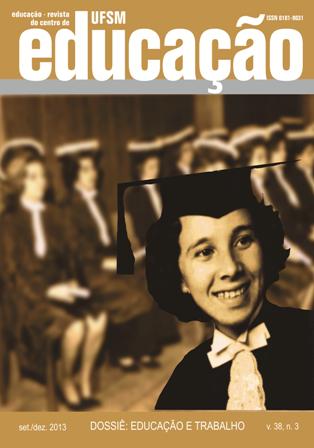Teaching and work productivity: recovering landmarks founders
DOI:
https://doi.org/10.5902/198464449049Keywords:
In this paper, we aim to make a rescue of some historical landmarks founders productivity at work and in education to better understand the logic legitimizes reaching the core of the teaching activity. The advance of the criteria on the productive workerAbstract
In this paper, we aim to make a rescue of some historical landmarks founders productivity at work and in education to better understand the logic legitimizes reaching the core of the teaching activity. The advance of the criteria on the productive worker training has its first expressions in the 1940s, even during the dictatorship of the Estado Novo. Firstly, we make a brief presentation of the concept of productivity; after that, some of its founders landmarks in the history of the country are shown, and, lastly, there is a presentation of the particularity of one of these landmarks: the presence of CBAI (Brazilian-American Commission of Industrial Education .)Downloads
Published
How to Cite
Issue
Section
License
Declaration of originality
We declare that all articles present in the journal Educação (UFSM) are originals and were not submitted for publishing on any other publication, as a whole or a fraction. We also declare that, after being published by Educação (UFSM), a paper will not be submitted to another journal within two years. After this time, our journal transfers the publishing rights to the authors, with a permit granted by the Editorial Council.
We also acknowledge that the originals’ submission to Educação (UFSM) implies on a transference of copyright for physical and digital publishing to the journal. In case of noncompliance, the violator will receive sanctions and penalties predicted by the Brazilian Copyright Protection Law (n. 9610, dated 19/02/98).
Attribution 4.0 International (CC BY 4.0)
This license lets others remix, transform, and build upon the material for any purpose, even commercially, and copy and redistribute the material in any medium or format.

This work is licensed under a Creative Commons Attribution 4.0 International (CC BY 4.0)






